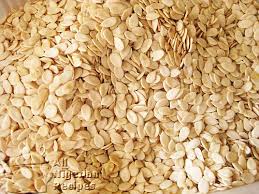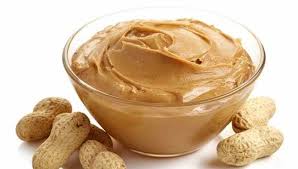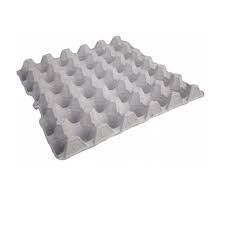Egusi Grinding and Packaging in Nigeria; The Feasibility Report.

Egusi (also known by variations including agusi, agushi) is the name for the fat- and protein-rich seeds of certain cucurbitaceous plants (squash, melon, gourd), which after being dried and ground are used as a major ingredient in West African cuisine.
Egusi seeds are high in protein and their flavor is said to be close to that of pumpkin seeds. Each seed is oval shaped and whitish in color with a light tan shell. The shelled seeds are ground for use in Nigerian recipes — especially the popular egusi soup.
Egusi soup is a kind of soup thickened with the ground seeds and popular in West Africa, with considerable local variation. Besides the seeds, water, and oil, egusi soup typically contains leaf vegetables, other vegetables, seasonings, and meat. Leaf vegetables typically used for egusi soup include bitterleaf, pumpkin leaf, celosia and spinach. Typical other vegetables include tomatoes and okra. Typical seasonings include chili peppers, onions, and locust beans. Also commonly used are beef, goat, fish, shrimps, or crayfish.
In Nigeria, egusi is very popular among the Igbo people of southeastern Nigeria, the Ibibio people and the Efik people (Calabar people) of southern Nigeria, the Hausa of northern Nigeria and the Edo people, Esan people, and Etsakọ people of the south-west of Nigeria. Yoruba people in general and quite notably the people of Ọsun State – especially the Ijesha people – eat “Iyan and Egusi”, a pounded yam and egusi soup.
The small looking egusi seeds are full of nutrients. These seeds are high with protein and oil contents as it is composed of 30% pure protein and 50% edible oil. These are an excellent source of tryptophan, methionine and arginine. It also has a small amount of calcium and carbohydrate.
The major raw materials is Egusi seeds and packaging materials. Per capital consumption of Egusi is estimated at 1,039,000 tones of Egusi Per annum.
The proposed production capacity is one (1) tons/day at 100% capacity utilization and the plant would operate at 90% of the installed capacity for a single shift of eight (8) hours per day for three hundred (300) working days per annum and producing two million, seven hundred thousand (2,700,000) sachets of 100 g of grinded egusi per annum. The input/output was assumed at 1 / 0.9 tons.
The machinery and equipment for Egusi premix production are locally available and comprises of Washing Machine, Milling Machine / Blender (S/S), Weighing Machine, Dryer, Mixing Machine (S/S), Packaging Machine, Accessories, Generator and Project Vehicle.
Table of Contents
EXECUTIVE SUMMARY 1.0 Business Overview 1.1 Description of the Business 1.2 Vision and Mission Statement 1.3 Business Objective 1.4 Critical Success Factor of the Business 1.5 Current Status of Business 1.6 Description of the Business Industry 1.7 Contribution to Local and National Economy 2. Marketing Plan 2.1 Description of product 2.2 Product Packaging and delivery 2.3 The Opportunity 2.4 Pricing Strategy 2.5 Target Market 2.6 Distribution and Delivery Strategy 2.7 Promotional Strategy 2.8 Competition 3. Production Plan 3.1 Description of the Location 3.2 Raw Materials 3.3 Production Equipment 3.4 Production Process 3.5 Production Cost 3.6 Stock Control Process 3.7 Pre-Operating activities and expenses 3.7.1 Operating Activities and Expenses 3.8 Project Implementation Schedule 4.0 Organizational and Management Plan 4.1 Ownership of the business 4.2 Profile of the promoters 4.3 Key Management Staff 4.3.2 Management Support Units 4.4 Details of salary schedule 5. Financial Plan 5.1 Financial Assumption 5.2 Start -up Capital Estimation 5.3 Source of Capital 5.4 Security of Loan 5.5 Loan Repayment Plan 5.6 Profit and Loss Analysis 5.7 Cash Flow Analysis 5.8 Viability Analysis 6.0 Business Risk and mitigation factor 6.1 Business Risks 6.2 SWOT Analysis
Project Specification:
Additional Info
Get this Report
Direct bank transfer
To order the report, Please do pay the sum of ₦30,000 into
Account Name : Foraminifera Market Research Ltd
Account Number : 274 20 569 37
Account Name : Foraminifera Market Research Ltd
Account Number : 101 76 603 95
Account Name : Foraminifera Ventures
Account Number : 011 66 066 32
Make your payment directly into our bank account. Please use your Order ID as the payment reference. Your order will not be shipped until the funds have cleared in our account.
Instructions
After payment call us on 01 -29 52 413 / 08033782777 or email us at foraminiferamarketresearch@yahoo.com with the payment details. After payment confirmation, the soft copy of the report would be sent to you within 24 hours.



